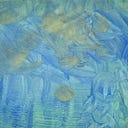Member-only story
The Mystery of D̶i̶e̶t̶r̶i̶c̶h̶ Dieter M̶u̶c̶h̶e̶l̶s̶t̶e̶i̶n̶ M̶u̶c̶k̶e̶l̶s̶t̶e̶i̶n̶ Muckenheim
Inuit carvings and sculpture seduce my senses. I enjoy collecting them in a minor rather than lavish way. I really admire the maximalization of expression and feeling these artists often achieve with a modicum of lines. One might think of this style as the Brancusi-like minimalism of the icy north. And, for now at least, these fantastic pieces of art are often priced to offer novice collectors who don’t want to break their bank accounts an easy “in.” Part of the reason for this might be that these artists most often work in soapstone, readily available, inexpensive and relatively easy to carve, thus enabling the maker to produce pieces relatively fast. Another part of the reason for those low price points is the short shrift given to nonpareil native artists of the north. The art world has no idea what it’s missing.
Sometimes these artists work in pricier stone and bone and those pieces are more expensive. I’m usually turned off and disgusted by the use of animal bodies to create “art.” If you’ve visited flea markets in rural America, you’ve no doubt seen the monstrosities some hunters have turned out: dead squirrels playing banjos, etc. A hard pass. But with the Inuit, it’s coming from a survival or subsistence economy where no creature is sacrificed to the ego or whims of some “great white hunter” trying to impress his friends. Or so it was for past generations. Today, you might encounter full time Inuit artists who never lived in the old ways. I…
